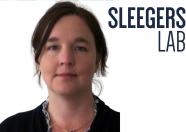Unraveling the mysteries of Alzheimer's disease

Unraveling the mysteries of Alzheimer's disease
Back in 1901, German psychiatrist Alois Alzheimer described his first case of what later became known as Alzheimer's disease. Over a century later, we've learned a lot about the molecular processes that lead to neurodegeneration and subsequent memory loss, but many things are still to be discovered. As a result, an effective therapy hasn't been found yet. But the future is looking brighter. Two VIB professors who have been focusing on the hereditary form of the disease tell the long story of Alzheimer's research.
The hereditary form of Alzheimer's disease is rare. It usually starts at a young age, sometimes at thirty or forty years old. The majority of Alzheimer’s disease types, which are non-hereditary, are caused by a combination of ageing, environmental factors – such as obesity, diabetes, high blood pressure, lack of exercise, depression, smoking – and a series of genetic risk factors. Being a carrier of such a gene doesn't mean you'll develop the disease, but it does increase the risk. That's why Alzheimer’s disease occurs more frequently in some families, but not all family members will be affected.
The innovators


Chromosome 21
Talk about Alzheimer's disease, and you’re bound to mention Christine Van Broeckhoven. After starting up her own laboratory at the University of Antwerp in 1983, professor Van Broeckhoven was the first Belgian scientist to use recombinant DNA techniques, such as gene splicing with enzymes and gene cloning. "In the 1980s, the first genetic maps of humans were constructed", says Van Broeckhoven, remembering her early career. "This allowed us to look at a complete family with a genetic disorder and find out how this disorder was passed on from generation to generation."
Van Broeckhoven investigated a Belgian family whose Alzheimer's disease appeared around the age of 35. "In this family, the transmission of the disease simply followed Mendel's laws of inheritance," says Van Broeckhoven. "But we didn't know which genetic defect caused the family's condition. What we did know, is that Down syndrome patients – who carry three copies of chromosome 21 – develop the same pathology as Alzheimer’s disease later in life. That drew our attention to chromosome 21 as the location for the genetic defect."
Van Broeckhoven's research group later discovered that a mutation in the gene coding for the amyloid precursor protein (APP) – located in chromosome 21 – is linked to early-onset Alzheimer's disease. The pathology involves so-called "amyloid plaques": protein aggregates that are associated with the development of more than 50 human diseases, with Alzheimer's disease being the most common.
The egg of Columbus
Professor Bart De Strooper has been focusing on the molecular mechanisms causing Alzheimer’s disease since the early 1990s. "I entered this field of research at a pivotal moment," says De Strooper. "Building on the breakthroughs from the 1980s, some fellow researchers and I discovered that a second type of protein located on chromosome 14, known as presenilin, plays a crucial role in the development of Alzheimer's disease. This declared why, in some cases, the genetic problem was located on chromosome 14 and not on 21. Presenilins can be seen as ‘little scissors’ that are supposed to cut the amyloid precursor protein in our brains. If this is not done in the right way, a short piece called amyloid-beta is released and starts sticking together, forming plaques.
"When we made this major discovery, I had just completed my PhD education. As a rookie in the scientific world, I still lacked experience. When Nature didn't accept the first version of my article on such an important breakthrough, I didn't understand. But eventually, it dawned on me that I had to get rid of all old research data in the article and should focus only on the new findings."
The article's second version was accepted and received as the egg of Columbus by the scientific world. The year after, in 1999, Nature published a second article by De Strooper about the role of presenilin in Alzheimer's disease. The following decades, both articles are highly cited, and the role and function of the molecular scissors is further untangled by De Strooper and his fellow scientists, including prof. Wim Annaert (whose lab identified an endogenous inhibitor that prevents gamma-secretase complex assembly and activity) and prof. Lucía Chávez-Gutiérrez (article published in Cell). These molecular scissors also play a role in numerous other cellular processes, and through a collaboration with VIB colleagues in the cancer field, insights from Alzheimer's also led to a new therapeutic approach for leukemia.
Cell by cell
Following De Strooper's findings, it seemed like we were on our way to developing treatments, exactly one century after Alois Alzheimer's first identified case. But more than 20 years later, we're still waiting for the first effective therapy for Alzheimer's disease. De Strooper: "Practically all clinical trials up until now have failed, mainly due to strong side effects. The wrong patients have been targeted, the administered doses have been inadequate… Many reasons can be given for these failures. But I prefer to look ahead – and I'm very optimistic about the future.”
"By using the latest technologies at single-cell level, we managed to integrate the disparate knowledge in a comprehensive and coherent picture of the cellular processes at the root of Alzheimer's disease, involving not only neurons but also astrocytes and microglia. Renzo Mancuso (a newly appointed group leader at the VIB-UAntwerp Center for Molecular Neurology) studies the role of the neuroinflammatory processes in the brain governed by these cells. With this level of detail, we can get a much more fine-grained picture of how different patients are affected by the disease process. This means more specific trials can be run, and the first results are promising. For the very first time, we have clinical proof that a drug is removing amyloid plaques.”

Breaking the taboo
"I can't guarantee our latest efforts will lead to the development of an effective treatment, but the gates are wide open for more clinical trials. I'm happy to see that Alzheimer's disease is finally getting the attention, research and funding it deserves – which is reflected in the launch of the VIB spin-off Muna Therapeutics, for instance. Following cancer in the seventies and AIDS in the eighties, the taboo around Alzheimer's is finally being broken as well."
Alzheimer's is the most common, but not the only type of dementia. Rosa Rademakers, who recently took over the baton from Van Broeckhoven as director of VIB's Antwerp research center is an authority when it comes to the genetics of frontotemporal dementia. Like Rademakers, many more group leaders and junior scientists have joined the mission to defeat dementia since Van Broeckhoven and De Strooper's seminal work.
"I'm glad to see a lot of young scientists are involved in neuroscience," Van Broeckhoven adds to that. "These engaged people are crucial for the future of research into a complex disorder revealing more and more of its secrets each day. About time, I'd say."
Faces of VIB's dementia research
Over the past 25 years, VIB's research on dementia has expanded in every direction. Explore the research of some of our group leaders working on dementia.

Want to discover the latest insights in Alzheimer's research?
Join our upcoming conference "New Horizons in Alzheimer's Disease"
Explore more












